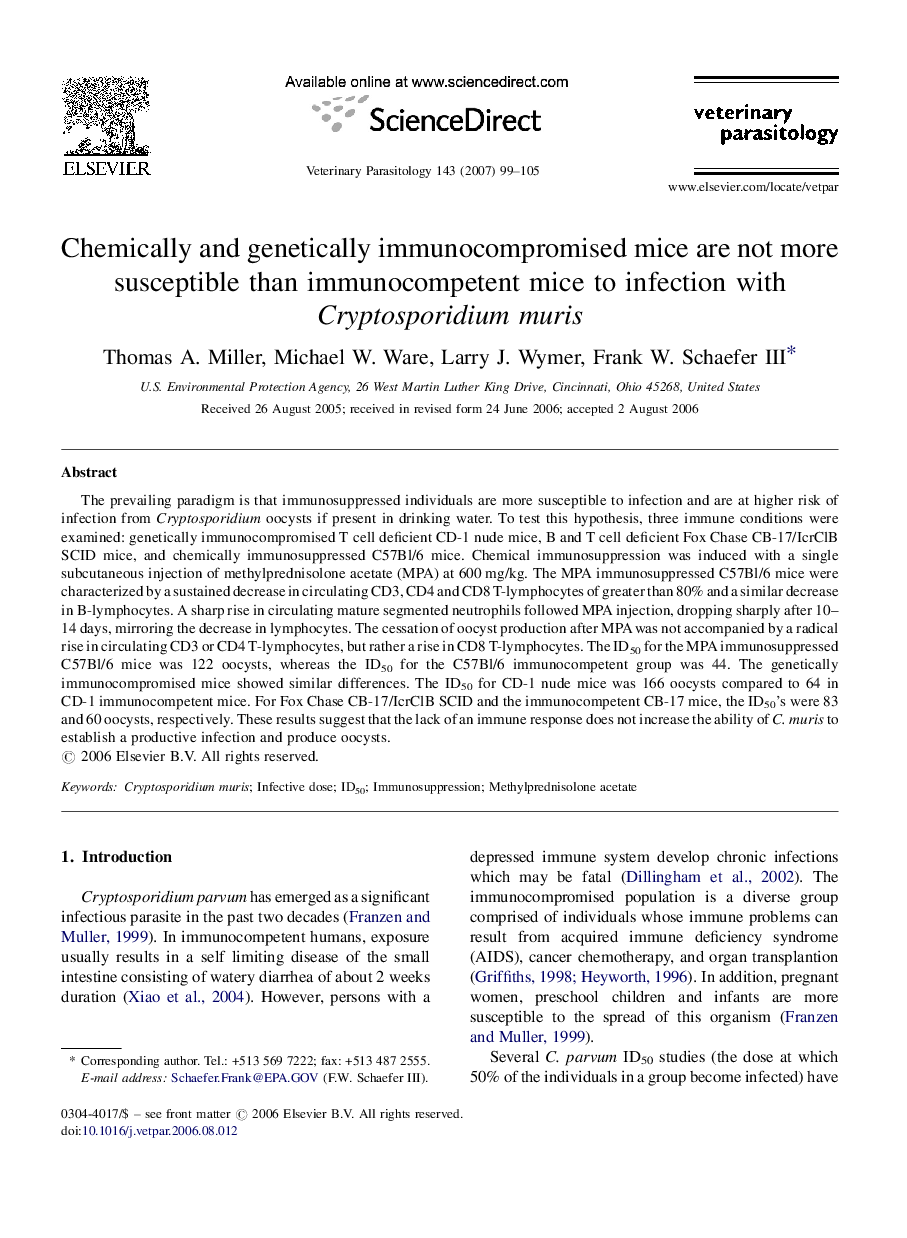| کد مقاله | کد نشریه | سال انتشار | مقاله انگلیسی | نسخه تمام متن |
|---|---|---|---|---|
| 2472223 | 1112565 | 2007 | 7 صفحه PDF | دانلود رایگان |

The prevailing paradigm is that immunosuppressed individuals are more susceptible to infection and are at higher risk of infection from Cryptosporidium oocysts if present in drinking water. To test this hypothesis, three immune conditions were examined: genetically immunocompromised T cell deficient CD-1 nude mice, B and T cell deficient Fox Chase CB-17/IcrClB SCID mice, and chemically immunosuppressed C57Bl/6 mice. Chemical immunosuppression was induced with a single subcutaneous injection of methylprednisolone acetate (MPA) at 600 mg/kg. The MPA immunosuppressed C57Bl/6 mice were characterized by a sustained decrease in circulating CD3, CD4 and CD8 T-lymphocytes of greater than 80% and a similar decrease in B-lymphocytes. A sharp rise in circulating mature segmented neutrophils followed MPA injection, dropping sharply after 10–14 days, mirroring the decrease in lymphocytes. The cessation of oocyst production after MPA was not accompanied by a radical rise in circulating CD3 or CD4 T-lymphocytes, but rather a rise in CD8 T-lymphocytes. The ID50 for the MPA immunosuppressed C57Bl/6 mice was 122 oocysts, whereas the ID50 for the C57Bl/6 immunocompetent group was 44. The genetically immunocompromised mice showed similar differences. The ID50 for CD-1 nude mice was 166 oocysts compared to 64 in CD-1 immunocompetent mice. For Fox Chase CB-17/IcrClB SCID and the immunocompetent CB-17 mice, the ID50's were 83 and 60 oocysts, respectively. These results suggest that the lack of an immune response does not increase the ability of C. muris to establish a productive infection and produce oocysts.
Journal: Veterinary Parasitology - Volume 143, Issue 2, 31 January 2007, Pages 99–105